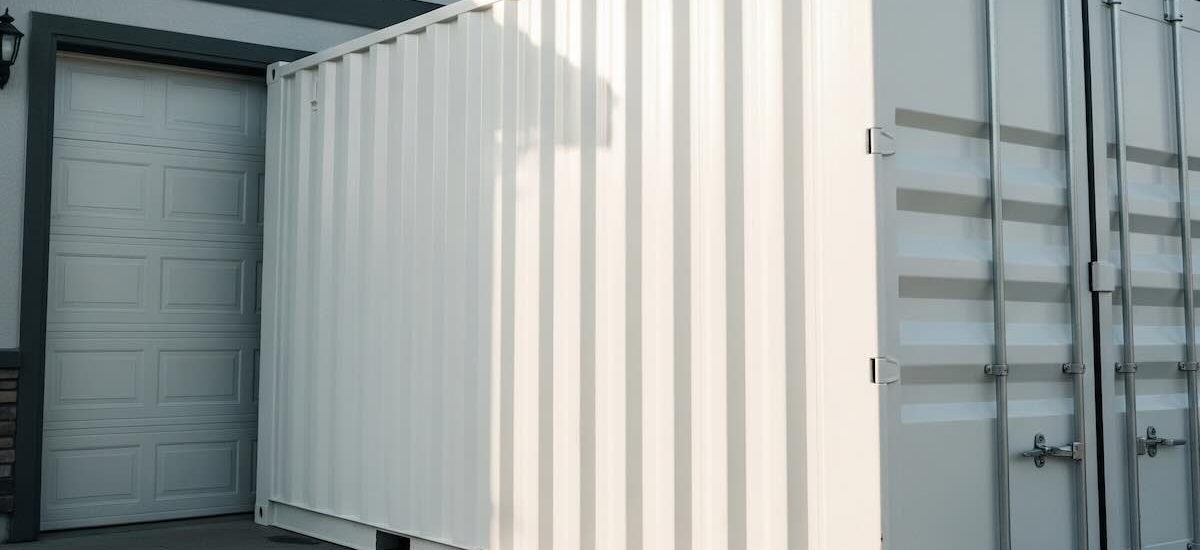Finding truly low-cost storage usually comes from matching the kind of space to the items you have and the way you plan to use it. Prices move with size, climate control, location, and small add-ons that are easy to miss at sign-up. Rather than chasing a single promo, it helps to understand where savings tend to appear, where fees hide, and which tradeoffs feel reasonable for your situation.
Key Points
- “Cheapest” usually means a unit that sits a little farther from the city core, on an upper floor, or at a site with limited hours; if your visits are rare, those tradeoffs tend to work in your favor.
- Right-sizing matters more than any discount code. A snug 5×10 that is stacked thoughtfully often costs far less than an under-filled 10×10 with air you do not use.
- Non-climate units, no-frills drive-ups, and off-peak portable containers are the lanes where people most often find real value; fragile or humidity-sensitive items may still justify climate control for a small subset of belongings.
- Small charges change the math. Administrative fees, lock purchases, “protection plans,” and post-promo rate hikes can erase an attractive first month unless you confirm the ongoing price in writing.
How to Choose a Low-Cost Path That Still Fits Your Needs
Three questions guide most decisions: how delicate are the items, how often you will visit, and how far you are willing to drive. The table below frames common choices so the savings and the tradeoffs are visible at the same time.
| Option | Best For | When It Prices Lowest | What to Watch |
|---|---|---|---|
| Non-climate self-storage (5×5, 5×10) | Durable household goods, boxed decor, tools, and seasonal items that tolerate temperature swings. | Upper floors in suburban or secondary ZIP codes where demand is calmer. | Humidity varies by region; raised pallets, desiccant packs, and sealed cartons keep contents happier. |
| No-frills drive-up units | Heavy pieces and infrequent access where a short unload is more important than a pristine lobby. | Older properties without 24/7 access or without premium frontage on a highway. | Temperatures swing widely; electronics and delicate finishes may be better elsewhere or packed with extra care. |
| Peer-to-peer “hosted” storage | Small loads and flexible timelines in residential garages or basements. | Neighborhoods beyond downtown where hosts price for convenience rather than premium traffic. | Access relies on the host’s schedule; a written agreement about hours, notice, and liability keeps expectations clear. |
| Portable container stored at the provider’s warehouse | Moves that need short-term storage without a second load/unload. | Shoulder seasons and single-container jobs that return to the warehouse after pickup. | City placement rules, delivery fees, and per-mile charges can nudge totals; confirming these up front avoids surprises. |
| Storage-in-transit with a moving company | Gaps of a few days to a month between homes when goods are already on the truck. | When the first 30 days are bundled into a move rather than purchased separately. | Monthly rates after the initial window can exceed self-storage; valuation terms apply to how items are covered while stored. |
| Outdoor vehicle, RV, or boat spaces | Vehicles that do not require enclosed bays. | Fenced lots just outside city centers with keypad gates and basic lighting. | Weather exposure is the tradeoff; good covers and wheel locks make the experience calmer. |
| Mini-lockers (2×3, 3×3) | Files, photos, and keepsakes that stack neatly. | Upper floors with elevator access where small spaces sit vacant longer. | Cost per cubic foot can be high; vertical stacking and uniform cartons prevent upsizing to the next tier. |
| Student, military, or seasonal specials | Fixed-term storage with predictable start and end dates. | Prepaid blocks in spring or fall rather than peak midsummer dates. | Intro rates often jump on month two; adding a renewal reminder keeps costs steady. |
| Shared space with a written agreement | Trusted friends or family when budgets are tight and needs are modest. | Clear terms, token rent, and a short list of approved items. | Insurance and access are personal responsibilities; a simple inventory and photos help everyone feel comfortable. |
| Climate-controlled “value” units | Wood furniture, photographs, instruments, and textiles in very humid or very cold regions. | Upper floors in non-downtown sites with longer commitments. | Climate adds cost; keeping only sensitive items in climate and everything else in non-climate keeps the budget balanced. |
Cost Levers That Keep the Monthly Bill Low
Small choices add up over a multi-month timeline. These are the levers people control most easily.
| Line Item | Where It Shows Up | Cheaper Approach |
|---|---|---|
| Unit size creep | Upsizing after a quick guess on volume. | Measure boxes, plan a stack height, and use shelves so you pay for cubic feet rather than empty floor area. |
| Location premium | Downtown frontage and 24/7 access fees. | Check sites five to twelve miles out; many readers find a ten-to-twenty percent drop for the same size and condition. |
| Climate surcharge | Full-room climate control for a few sensitive items. | Keep delicate pieces together in a smaller climate unit and move sturdier items to a cheaper non-climate space. |
| Administrative and lock fees | Move-in day paperwork and mandatory lock purchases. | Bring an approved disc lock and ask whether a longer initial term waives the setup fee. |
| Insurance or “protection” plans | Facility requires proof of coverage at sign-up. | Confirm whether your renters or homeowners policy already provides off-premises coverage and whether the limit is sufficient. |
| Promo cliffs | Month-one discounts followed by higher base rates. | Get the post-promo price in writing and set a reminder to reassess before the higher rate begins. |
The Ten Cheapest Storage Options
- Upper-floor non-climate units in secondary ZIP codes. These locations trade a short elevator ride for a noticeably lower monthly rate. If your visits are rare and your items are sturdy, this combination usually lands near the bottom of the price range.
- No-frills drive-up units. Older exteriors often hide very functional spaces. When loading heavy pieces, being able to back to the door saves time and lets you choose a smaller unit because stacking feels easier.
- Peer-to-peer hosted spaces. A corner of a garage or basement can bridge a tight budget for a few months. The experience is smoothest when hours, notice for visits, and acceptable items are written down at the start.
- One portable container stored at the provider’s warehouse. A single pickup with warehouse storage avoids double handling. Off-peak dates and a quick turnaround keep the invoice gentle.
- Storage-in-transit with your mover. When the gap between homes is short, rolling storage into the moving job avoids a second contract and a second load. After the first month, it helps to compare rates with a self-storage unit so you do not overpay.
- Outdoor vehicle or boat spaces. A basic fenced lot solves a very specific need at a fraction of the cost of enclosed storage. Good covers and clear gate hours make this feel straightforward.
- Mini-lockers. For files, photographs, and keepsakes, a small locker will often hold more than it looks like at first glance—especially when cartons match and stack cleanly.
- Student, military, and seasonal promotions. Facilities plan for these cycles and price accordingly. Prepaid blocks in spring or fall are where many readers find real value without haggling.
- Shared space with a written agreement. A friend or relative may have a half bay that works well for a season. A simple agreement keeps expectations gentle and friendships intact.
- Climate-controlled “value” units. When climate is non-negotiable, upper floors in non-downtown sites tend to be kinder on the wallet. Keeping only the vulnerable items in climate control prevents needless upsizing.
Common Mistakes and Softer Alternatives
- Paying for empty air. Half-full rooms are expensive over time. Uniform cartons, a simple shelf, and a planned stack height usually keep you in the smaller size.
- Underestimating moisture. Even in non-climate spaces, a few desiccant packs, a pallet, and sealed boxes reduce the chance of musty surprises when you open the door.
- Ignoring the “all-in” price. It’s easy to focus on month one. Adding fees, lock costs, coverage, and the month-two rate to a quick spreadsheet gives you the real number you will pay.
- Leaving access vague. For peer-to-peer or shared spaces, clear hours and a key handoff routine make life simpler for everyone.
FAQ
Is non-climate storage safe for furniture if I only need a few months?
Many households do well with non-climate for short terms when items are packed thoughtfully. Solid wood, metal, and durable fabrics tolerate seasonal swings if they are clean, dry, padded, and kept off the floor. Photographs, instruments, and delicate finishes prefer climate control regardless of duration.
How far from home do people go to unlock better pricing?
A radius of five to twelve miles often makes a noticeable difference. If you plan to visit only once a month, the extra drive tends to feel minor compared with the monthly savings.
What size fits a studio or one-bedroom apartment?
Studios usually fit in a well-planned 5×10 when cartons are uniform and stacked to about five feet with a narrow aisle. One-bedroom apartments land in a 5×10 or 8×10 when furniture is padded and vertical space is used well.
Are peer-to-peer storage spaces insured like a regular facility?
Coverage varies by platform and host. Many renters rely on off-premises coverage from their own renters or homeowners policy. A quick call to your insurer clarifies limits, and photos taken before storage help if you ever need to file a claim.
When do portable containers feel like a bargain?
Single-container jobs during shoulder seasons price well, especially when the container returns to the provider’s warehouse after pickup. Keeping a container parked for months adds rental days and may involve city permits, which dulls the savings.
Does prepaying lower the total?
Prepaying can lock a lower rate and protect against mid-term increases. It works best when your timeline is stable. If it may change, a shorter commitment keeps options open without penalty.
References
- Public Storage – Unit Size Guide (common sizes and what fits).
- PODS – Moving & Storage Cost Guide (container pricing factors and seasonal effects).
- U-Haul – Trailer & Storage Options (drive-up access and vehicle storage basics).
- Neighbor (Peer-to-Peer Storage) – Safety & Coverage (hosted storage policies and access rules).
- Insurance Information Institute – Self-Storage Coverage & Tips (off-premises coverage, exclusions, and protection plans).
- Coastal Moving Services – Should I Purchase Self Storage Insurance?
- NAIC – Renters Insurance: Protecting Your Belongings (off-premises limits and scheduling high-value items).
- Coastal Moving Services – How Much Does Storage Unit Cost? (pricing drivers by size, climate, and location).
- Consumer Reports – Moving & Storage Tips (packing, inventory, and claims basics).
Pricing and policies vary by provider, season, and region. Treat the ranges above as planning baselines, and confirm details with the facility or service you choose before you book.








